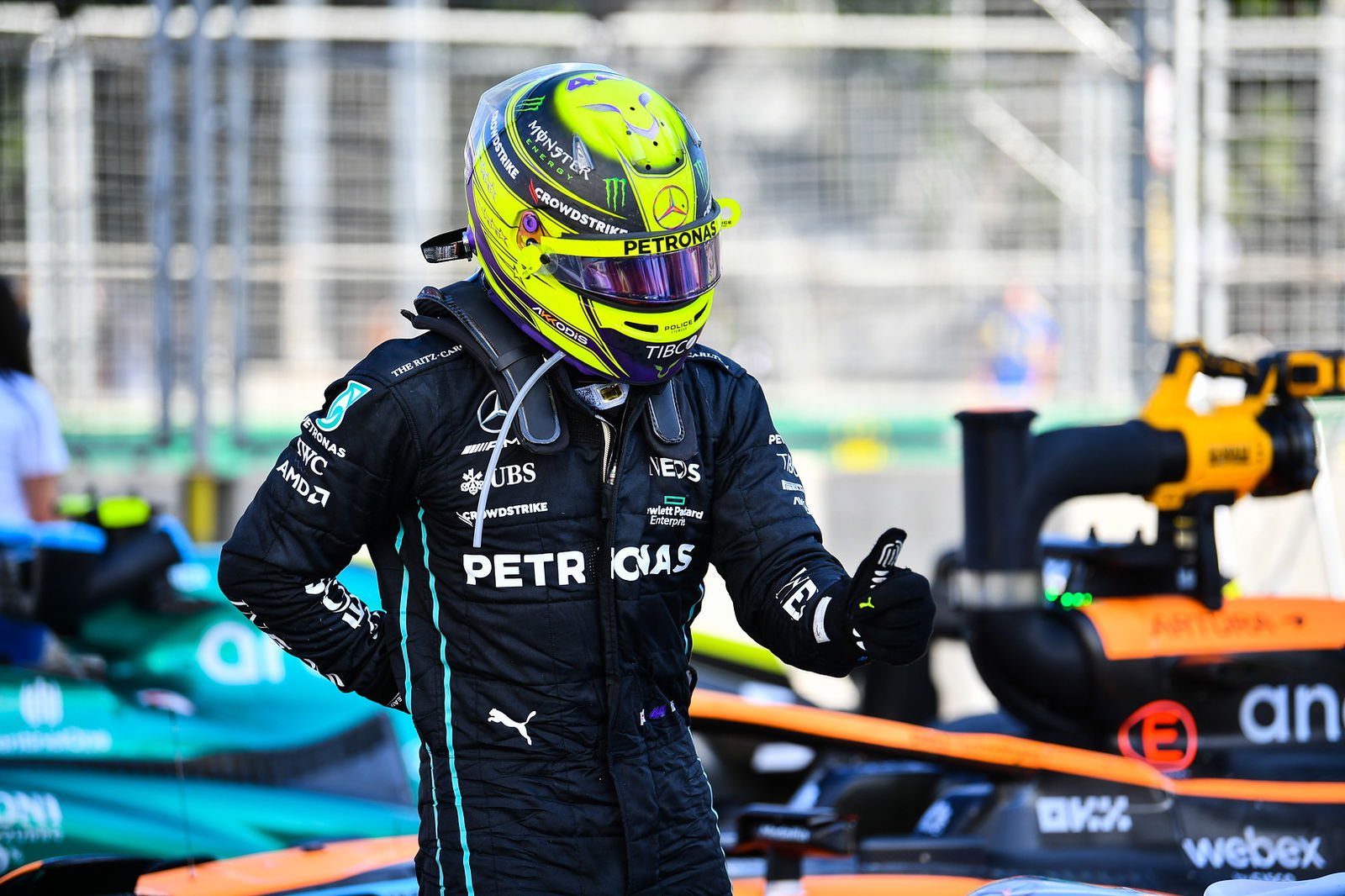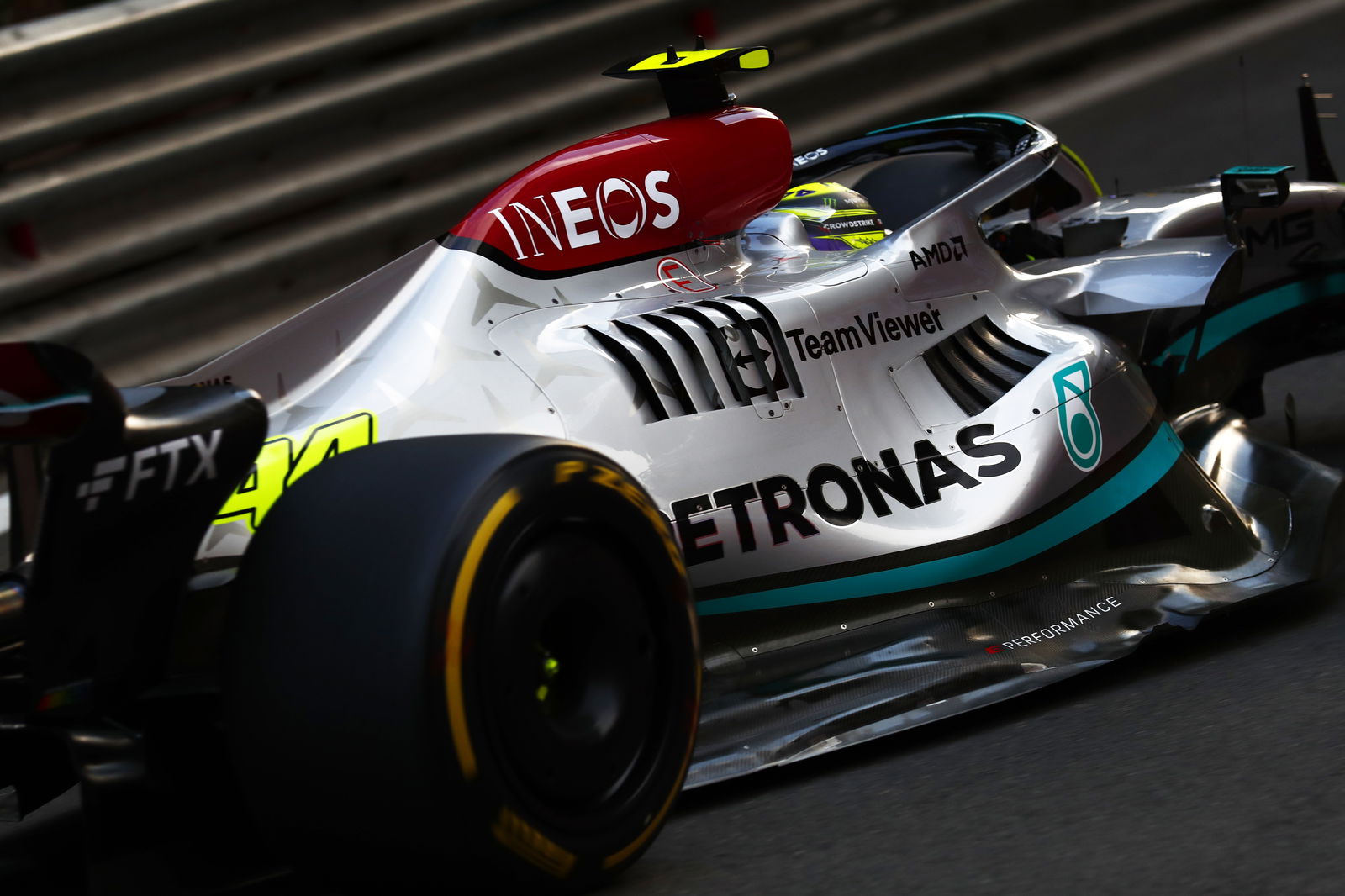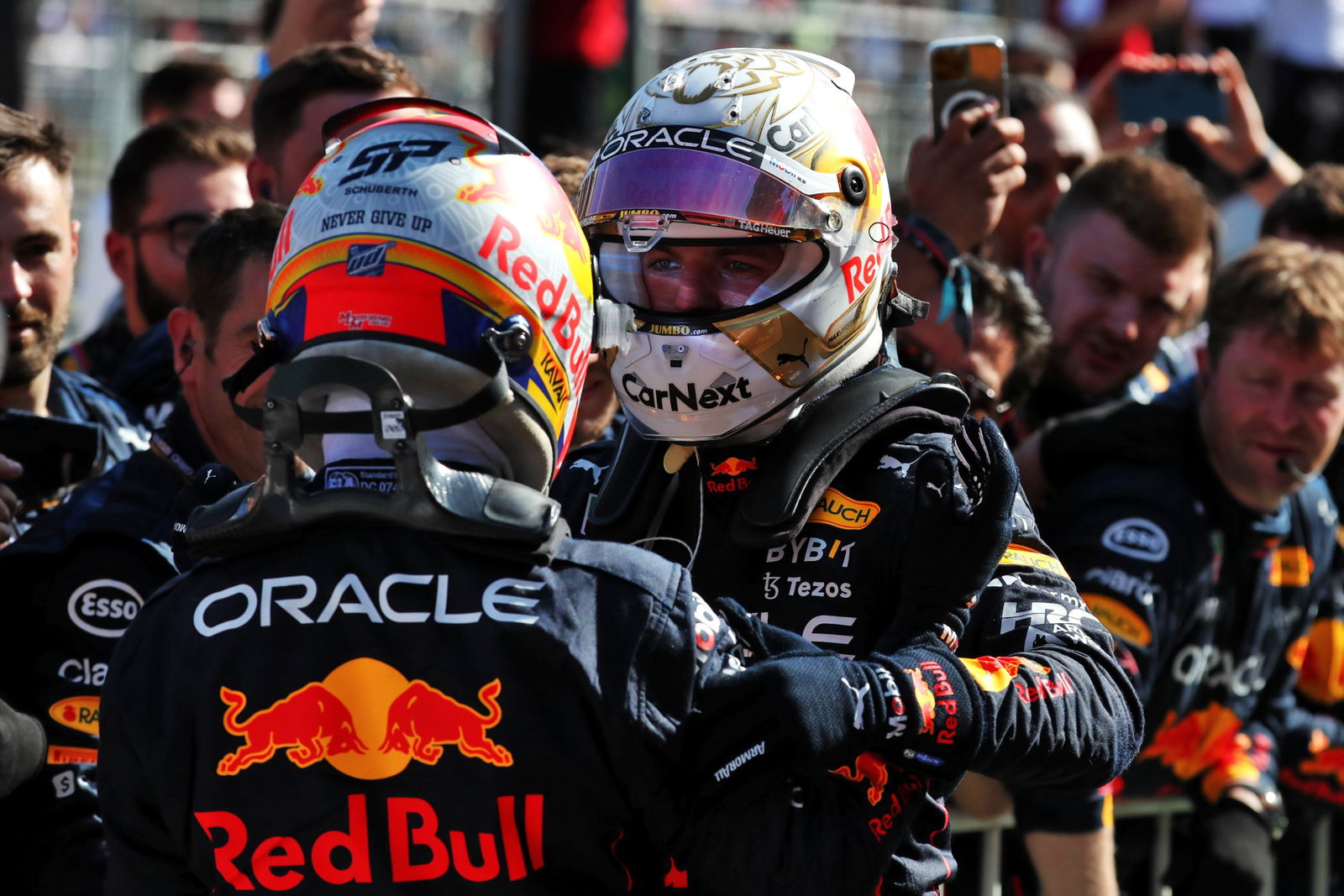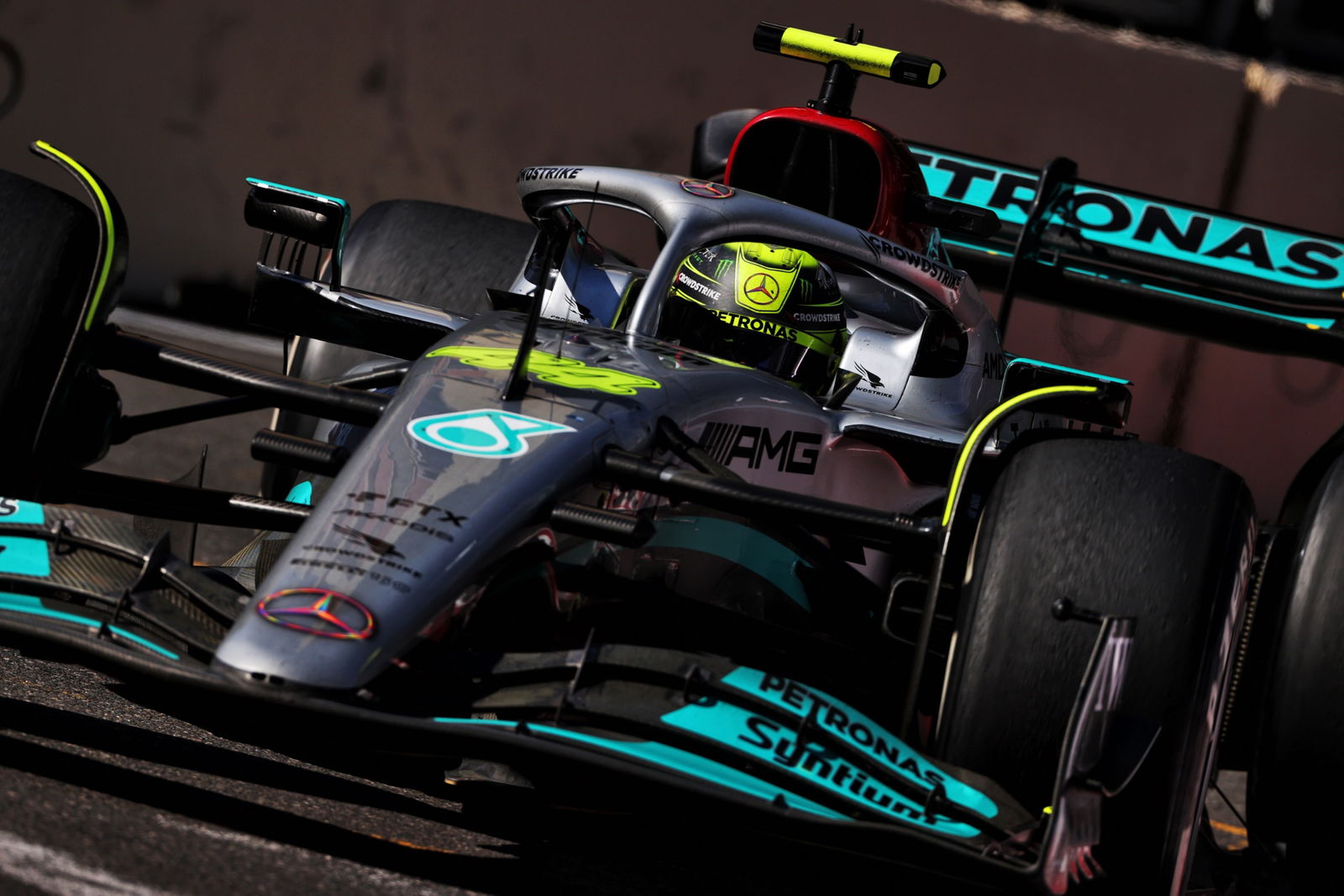F1 Canadian GP: Could FIA porpoising intervention be bad news for Mercedes?

On the eve of this weekend’s Canadian Grand Prix, F1’s governing body, the FIA, issued a technical directive to teams setting out plans to eradicate the aerodynamic phenomenon known as porpoising on safety grounds.
Almost all of the newly-designed 2022 cars have experienced varying forms of high-speed bouncing so far this season, with Mercedes’ car in particular plagued by porpoising.
- FIA intervenes to reduce F1 porpoising on safety grounds
- Porpoising, bouncing and bottoming: What's the difference?
- F1 drivers agree on need to change porpoising rules… except for one
The likes of Ferrari’s Carlos Sainz, Mercedes’ George Russell, AlphaTauri’s Pierre Gasly and McLaren’s Daniel Ricciardo have all highlighted their fears over the possible long-term health impact the extreme bouncing could have on their bodies over the coming seasons
At the Azerbaijan Grand Prix, Russell warned that F1’s current rules are a “recipe for disaster”, while his Mercedes teammate Lewis Hamilton suffered severe lower back pain after spending the race being battered by the violent bouncing - experiencing up to 6G in vertical loads - in his car.

In response, the FIA’s new rules will force teams struggling with bouncing to limit the level of “vertical oscillations” to help better protect their drivers. The other “short-term” proposal is “closer scrutiny of the planks and skids, both in terms of their design and the observed wear”.
It is understood that the Montreal weekend will be used to simply gather data before a technical meeting with all the teams is convened to “define measures that will reduce the propensity of cars to exhibit such phenomena in the medium term.”
Is this good or bad for Mercedes?
On the face of it, the FIA’s announcement that it is intervening on safety grounds could be viewed as a win for Mercedes given the reigning world champions were complaining the loudest about the issue.
But porpoising was not actually the root cause of Mercedes’ bouncing problems last time out in Baku.
Mercedes actually made a step forward towards addressing the porpoising with an upgrade that was introduced at the Spanish Grand Prix. In Azerbaijan, the issue related to Mercedes running their cars too low to the ground on a track that was particularly bumpy. This caused the W13 to ‘bottom out’ in an aggressive manner.
What Mercedes would have been hoping to see is some kind of technical directive implemented that forced all the teams to raise their cars, something that Red Bull boss Christian Horner seemed to be worried about when he implied Mercedes were overplaying the dangers of their car’s bouncing.

"You can see it's uncomfortable, but there are remedies to that,” Horner said in Baku. “But it's to the detriment of the car performance. What's the easiest thing to do is to complain from a safety point of view, but each team has a choice."
As it has turned out, the FIA’s messaging is actually aimed specifically at the teams whose cars are struggling with the bouncing.
Earlier this season, Mercedes had to raise their car to combat the porpoising, which had a detrimental effect on performance. There are suggestions that a possible maximum tolerance for bouncing would force Mercedes to once again compromise on set-up, thus hindering their competitiveness - in the short-term, at least.
However, Russell stressed the effect on the competitive order will not be clear cut and views the fact the FIA is stepping in to address the problem as ultimately being a positive.
"I think this is something that everybody thinks Mercedes is sort of pushing for, but from a pure performance side of things, we don't really want change because if there's change, you never know if it's going in your favour or against you," Russell told Sky.
"It's something that we as drivers have spoken about globally, that we want change moving forward because what we went through last weekend just wasn't sustainable.

"I think it's promising to see that they've taken action on this straight away and it's not taken them weeks and months and political decisions to change something like this.
“When it comes to safety, things need to be resolved as soon as possible, so I'm not surprised to see it come in so quickly but I think it's good for everyone."
Could it impact the title fight?
The other question is whether the ruling could end up giving Red Bull the advantage over Ferrari and effectively kill off this year’s world championship battle.
Porpoising has not been an issue for Red Bull’s RB18, but the same cannot be said for Ferrari’s F1-75, which has often been seen bouncing in an extreme manner. Unlike Mercedes struggles, this has not appeared to have any bearing on Ferrari’s competitiveness.
So, could the technical directive restrict Ferrari’s performance and ultimately tip the title race in Red Bull’s favour? Max Verstappen already holds a 34-point lead over third-placed Charles Leclerc after taking four victories from the last five races, while Red Bull sits a commanding 80 points clear of Ferrari in the constructors’ standings.

Haas team principal Guenther Steiner warned that the FIA’s attempt to clampdown on porpoising for safety reasons could inadvertently influence the pecking order in a dramatic way.
“If the FIA comes up with a change and Mercedes has developed something in that direction already, then they come out of the gate already running,” Steiner said on Thursday. “I think that is going a little bit too far.
“We need to measure what it is actually. Some of the cars are pretty bad. And there is a solution – just raise the ride height. But then you go slow. Who wants to go slow?
“It’s like, I don’t know how many years ago, when in the middle of the season we had the change of tyres.
“Something like this, you change something fundamentally, you could change the pecking order again completely. Is that really fair?”


